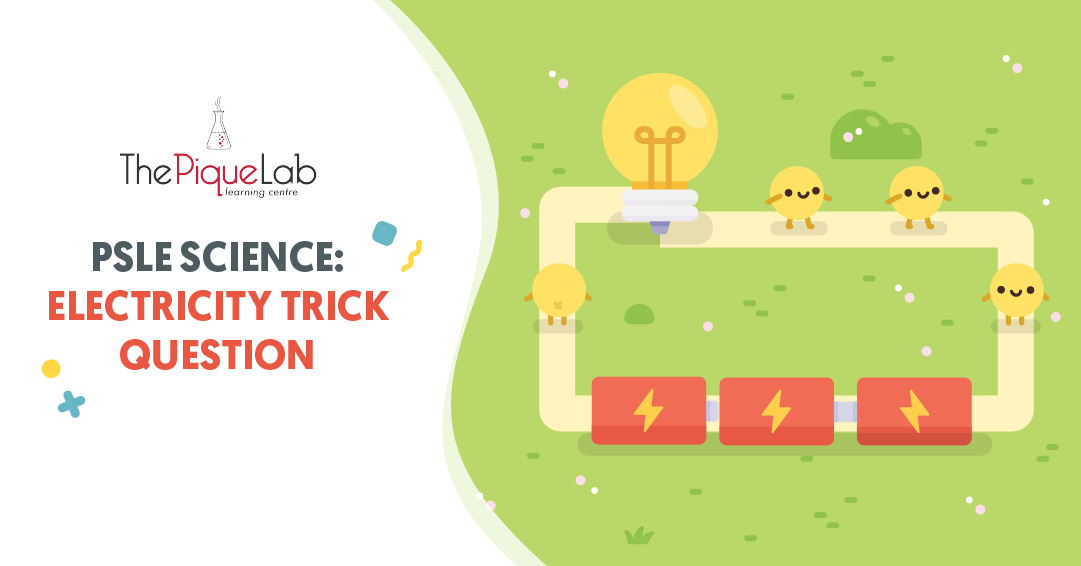Do you struggle to score full marks for questions on the topic of Magnets? The topic of Magnets is often neglected by many students, which may include yourself, because the concepts are fairly easy.
However, you can be tricked by the phrasing of such questions if you fail to read the questions carefully. This results in “missing links” in your final answers!
In today’s article, I will be analysing an examination question on Magnets from the 2019 Raffles Girls’ Primary School (RGPS) P6 SA1 Examination Paper to demonstrate what I have mentioned earlier.
You may also choose to watch the video here.
Read Also:
Let’s Get Started On This Question!

Source: Raffles Girls’ Primary School – 2019 P6 SA1 Examination Paper [Q36]
Let’s focus on the keyword “styrofoam”. The key property of styrofoam is that it floats on water. This means that the bar magnet, placed on the styrofoam block, will also be floating.
Next, the question also states “the magnet was at rest”. What does the phrase ‘magnet at rest’ mean?
A magnet at rest means that it is not moving. Take note that the bar magnet rests in a very specific direction.
🧭 A compass is provided in the question.
Always remember that the needle of the compass is a magnet.
Besides, take note that the label for the North pole is shown.

The compass’ North pole is pointing to the right diagonally. Similarly, the bar magnet is also pointing to the right diagonally.
Let’s Analyse Part (A)
“Based on Ahmad’s results, which property of magnets is shown in his observation?”
Most students will write their answer as “Magnets come to rest in the north-south direction”. However, that answer will only be worth a ½ mark as it is incomplete.
While it is true that magnets come to rest in the north-south direction, a complete answer must state an additional condition: The magnet must be described as freely floating or freely suspended.
🧲 ONLY freely floating or freely suspended magnets will come to rest in the north-south direction.
In this question, we should use “freely floating” as the magnet is floating on water.
Suggested Answer For Part (A)
Magnets that are freely floating will come to rest in a north-south direction.
⭐️ Tip: “Freely suspended” may be used when the magnet is tied to a string and left hanging. It will also come to rest in a north-south direction.
This example shows why it is important for you to recap on the basics even if the topic of Magnets seems easy. This is how you can identify missing links in your answers and improve on them!
Let’s Analyse Part (B)

Source: Raffles Girls’ Primary School – 2019 SA1 Examination Paper [Q36]
Most students will immediately come to this conclusion: Y is the North and X is the South.
When asked how they came to this conclusion, they will say that this is based on the previous diagram where the Y pole of the bar magnet and the North pole of the compass needle are facing the same direction.
⚠️ Misconception Alert!
When students are asked to elaborate on how this relates to the compass, many of them will explain that the North pole of the compass needle will always face the same direction as the North pole of the bar magnet.
While the labels they draw on the compass are correct, their explanation is wrong, demonstrating their misconception.
Remember: the magnets in part (a) are freely floating. That is why they come to rest in the north-south direction.
However, in the current question, the compass needle is NOT freely floating. As stated in the question, the bar magnet is placed near the compass. Therefore its magnetism is interfering with the orientation of the needle!
Now that we have proven that the compass needle is not free/at rest, how do we explain its position? We will have to use a different explanation and concept:
Magnets have poles. Unlike poles (North and South) that are facing each other will attract. This is the reason why the North pole of the compass needle faces right. It is attracted to the south pole (X) of the bar magnet!
🧲 To Reiterate: The unlike poles of the bar magnet and compass are facing each other and are attracted. This attraction means that the compass needle is no longer freely floating and will not point to the North pole, or in the north-south direction.
It will return to a free-floating position and point to the North pole once the bar magnet is removed from the set-up.
Suggested Answer For Part (B)
Based on the earlier observation, Pole Y was pointing towards the North and is the North pole while Pole X was pointing towards the South and is the South pole.
Since unlike poles of the bar magnet and the needle face each other when they attract, the North pole of the needle must be facing Pole X of the bar magnet, which is the South pole.
Conclusion
I have discussed the importance of reading the question carefully so that you can relate your answers back to the question, avoiding missing links in your answers. I have also highlighted a common misconception that you should be mindful of when answering similar questions in future.
Check out our other articles on Magnets and stay tuned for more articles! 🙂

If you like our methodology, we've some upcoming workshops:







